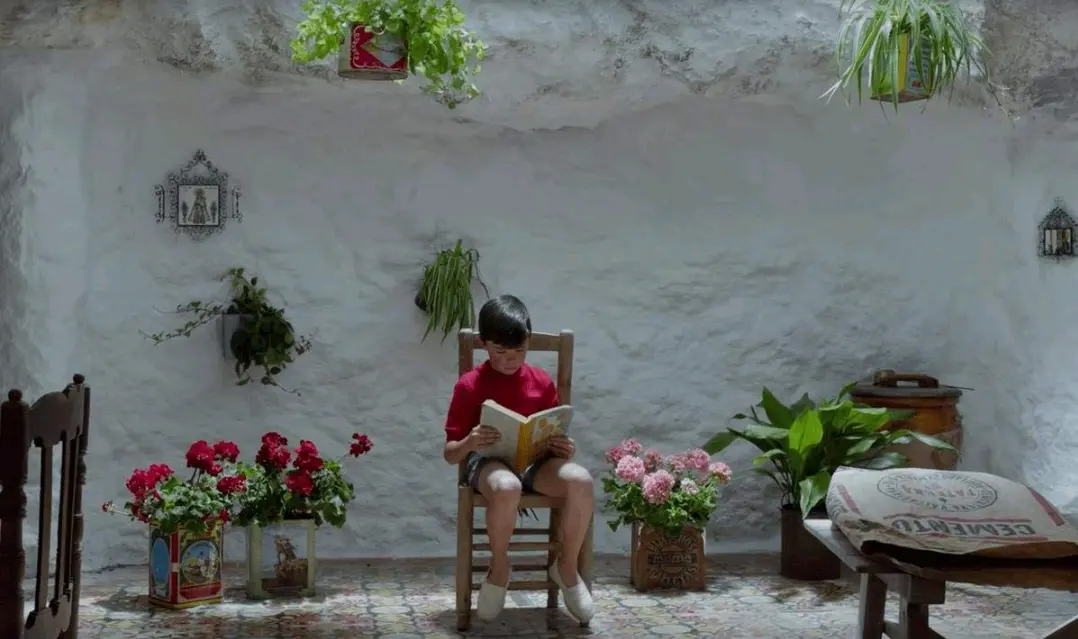Summary
Antonio Banderas in Pain & Glory gives a stunning, career-defining performance.
Pedro Almodóvar’s latest film is probably his most personal and mature work to date. Pain & Glory is essentially an autobiographical film, lifting memories of his youth, and the pains of maturing into a grown, adult man. A bit of self-indulgence comes with any filmmaker that takes his own accounts into his stories; write what you know, after all. Even when looking at the film’s poster, the shadowy silhouette of Antonio Banderas’s profile looks just like the trailblazing director whose career was born out of the La Movida Madrilena Renaissance, I had the feeling, after watching it, it may not be able to be made without last year’s Roma. It’s almost a parallel universe of a very loosely-based behind-the-scenes story on how artists’ personal lives form their professional identities. This is an ode to how Almodóvar grew up and how he came to be the man he is today.
The film begins with the fictitious Spanish film director Salvador Mallo (Banderas), who is on the downward slide in his career, that doesn’t appear to be stopping, until the release of the film that made him famous, Sabor. He begins to reconcile his past, visiting the man he has not talked to in thirty years who starred in that film, Albert Crespo (La Novia’s Asier Etxeandia). There, he begins a heroin addiction to counter his battle with depression and a physical ailment that has him choking regularly, which he fears may be a cancerous tumor. Throughout the film, there are flashback scenes folded gently into the story of his childhood, when his father (The Warning’s Raul Averalo) and his mother Jacinta (Penelope Cruz, phenomenal here), where they moved into a whitewash cave community on the coast. Jacinta has her child, Salvador (Asier Flores), who tutors a young working-class man, Eduardo (Cesar Vicente), to read and write. There, his mother attempts to get him into a seminary, as it’s the only way for a child from a poor family to get a formal education.

The setup of the film is the third part of Almodóvar’s eclectic trilogy with 1987’s Law of Desire and 2004’s Bad Education. Pain & Glory, while not perfect, is his best film since the latter. Besides its sybaritic style, that may be too meta for its own good, it proudly doubles down, along with its overdone title and chapter sequences. For all that nitpicking, it really has a remarkable sense of time and place, that is not just limited to its flashback sequences. It’s quite something, in all honesty. The poignant shots of tiles being finished to a kitchen wall in a village where the residents live in polished whitewashed caves to the adult apartment Salvador Mallo owns, which in real life is Almodóvar’s apartment in Madrid, it may not get more self-referential than that, until, you realize, the turbulent relationship between Salvador and Albert mirrors the one Almodóvar and Banderas had previously.
Is it all too cute, since it’s really examining his own life, relationships, essentially making a biographical film of himself, or, at the very least, a metaphor of it? It can be, but it’s the performances here that pique your interest and keep it. From her first scene and the glorious choreographed shot at the end of the film, Penelope Cruz is a wonderful role. If I could choose, she would be a lock for a host of supporting actress nominations by the time the year ends. Then there is Banderas, who is so good here that by the time you get to the film’s standout scene when being visited by an old friend you quietly begin to remember what a talented actor he has always been. It’s stunning, really; his best performance in recent memory and a career-defining one. He is the reason to see it, and you may even forgive him for Ballistic: Ecks vs. Sever because of it.



